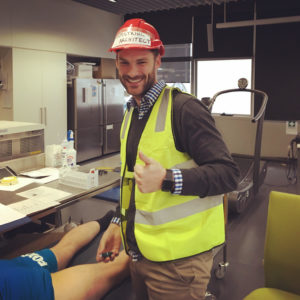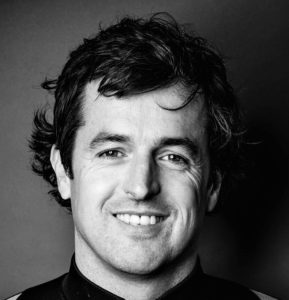By Alan McCall
The hard work of PhD candidates and their innovative findings are integral to moving our field forward. They provide evidence based practical recommendations for clinicians and practitioners. The BJSM PhD Academy Awards recognise and celebrate the contribution of younger and emerging leaders.
The ‘People’ and the ‘Editors’ have voted for the inaugural BJSM PhD Oscars! Thanks to all of you who engaged via the BJSM blog – we were delighted to see votes from all over the world for the People’s Choice award.
 The People’s Choice Award:
The People’s Choice Award:
Voted for by the BJSM readership through social media outlets, the winner is…
Dr Ryan Timmins for his thesis entitled: Biceps femoris architecture: the association with injury and response to training. (watch video HERE)
The Editors’ Choice Award:
For the Editors’ Choice Award, each PhD summary was graded based on 6 categories: 1) Novelty, 2) Rationale, 3) Methods, 4) Ambition, 5) Practical applications and 6) Perceived reach. The winner of the BJSM PhD Academy Award is…
 Dr James O’Brien for his thesis entitled: Enhancing the implementation of injury prevention exercise programmes in professional football
Dr James O’Brien for his thesis entitled: Enhancing the implementation of injury prevention exercise programmes in professional football
(watch video HERE)
CONGRATS TO BOTH!
Here’s our interview with each winner:
Ryan Timmins
Congratulations! How does it feel to hold the People’s Choice ‘Oscar’?
It’s a big shock to be completely honest. I didn’t expect it at all. To be up against some amazing researchers and come out on top, is surprising. The work that Guus Reurink and James O’Brien are doing will have an impact on sports medicine for years to come. It’s a great initiative from BJSM to promote the work of some great PhDs within the field.
What’s the elevator pitch for your thesis?
Hamstring injuries are the most common injury in elite sport and although research in this area is increasing, injury rates aren’t dropping. I identified different factors, mainly muscle structural components, which are associated with an increased risk of injury; interventions can alter these characteristics of muscle.
What was your most noteworthy finding?
In elite soccer players, short muscle fascicles (a bundle of fibres – which can be assessed via ultrasound) increases the risk of future hamstring strain injury. This is a previously unidentified risk factor and one which is now being considered within injury prevention and rehabilitation programs.
What was your most significant personal or professional learning that came out of the project?
That research within elite sport medicine isn’t impossible, despite the common view here in Australia that it is. There’s moments where you need to consider all views etc, but being approachable and working well with the sporting clubs enables a mutually beneficial result. Sometimes egos need to be checked at the door and this takes a bit of time to get past for some.
What’s next for you? How can research progress further?
There’s plenty of space now to look at interventions to modify these variables and thus decrease the risk of injury. However, the big leap will be implementing these evidence based interventions within elite populations. It isn’t impossible, but one which will take a bit of massaging to happen. It’s an implementation challenge.
Where are you working now?
I’m at Australian Catholic University in Melbourne, still working closely with Dr David Opar (my PhD supervisor) in the area of hamstring injury prevention and rehabilitation. I also hold a position at the Melbourne Victory Football Club, which helps in understanding some of the limitations with implementing research within the sporting sphere.
Any special thank-yous / shout outs?
As always this is never an individual effort. This whole PhD and awards process wouldn’t have happened without a great team of people:
Anthony (Das) Shield: now an Associate Professor who always provided great insight and direction and is always a wealth of knowledge. Without him, a lot of the people in this thank you list wouldn’t even be in research (myself included); David Opar: one of the greats and one who will continue to change sports medicine research now and into the future; Morgan Williams: the magic man responsible for anything interesting in our papers. We have him to thank for his tireless hours with JMP and trying to bash our stats into something understandable. Also thank you to all my other co authors and ripper blokes (and Casey) from our research group: Christian Lorenzen; Nirav Maniar; Joshua Ruddy; Jack Hickey; Joel Presland; Matthew Bourne; Chris Pollard; Dan Messer; Steven Duhig; Casey Sims; Argell San Jose.
James O’Brien
Congratulations! How does it feel to be the Editors’ Choice? (for the grammar pundits, it’s Editors’ choice because there are 3 Editors of the BJSM)…
I’m really honoured to have my work recognised in this way, especially considering the strength of all the nominees’ projects. The positive feedback I’ve received this past week from both researchers and clinicians also means a lot.
What’s the elevator pitch summary of your thesis?
Football is the world’s most popular sport, but injuries are common. Specific exercise programs can drastically reduce the number of injuries, but a lot of teams choose not to use these programs, or don’t perform them correctly. I asked “Why is this?”, with the aim of improving use of these exercise programs, and hence preventing more football injuries.
What did you discover?
The most important finding was the wide range of barriers and facilitators to implementing injury prevention programs. This is important because these factors directly influence the ultimate success of these programs, when teams employ them under real world conditions.
What was your most significant personal or professional lesson?
As I come from a clinical background, the biggest lesson for me was that conducting and reporting high quality research is really hard work. I developed huge respect for top-level researchers in sport and exercise medicine, especially those few who manage to combine both research and clinical work at a high level.
What’s next for you?
Important steps are understanding what components of injury prevention exercise programs are crucial to their success, along with the required dosage. There’s also a need for innovative ways of harmonising injury prevention with other important goals in the football environment, especially performance goals. Future injury prevention requires multi-faceted strategies that embrace the complexity of the environments in which they are delivered.
What are you doing now?
I’m extremely fortunate to be working in one of the world’s leading football academies at Red Bull Salzburg. My work involves a combination of injury prevention research and practice, along with physiotherapy treatments and supervision. In the academy, I’ve been able to directly apply the important lessons I’ve learnt from my PhD. We’ve enjoyed big injury reductions, along with significant sporting success, including winning the UEFA Youth League.
Any special thank-yous/shout outs?
Most of all I want to thank my wife and children for supporting me through my PhD. The trials and sufferings of PhD students are well known, but those of their partners and families often go unheard. A huge thank you to my supervisors Professor Caroline Finch and Associate Professor Warren Young, along with the whole team at ACRISP, Federation University Australia, who are all conducting very important research. I also want to thank my colleagues in the medical team at the Red Bull Academy; I cannot imagine a finer group of people to work with. Finally, thanks to BJSM for drawing attention to the contribution PhD students make to sport and exercise medicine
Editors’ notes: Big thanks to BJSM Senior Associate Editor Dr Alan McCall who runs this part of the BJSM. Every element of BJSM takes a ton of work and we have sportsmedicine’s best team – by a mile! Kudos to all whose work is published in this monthly BJSM feature, part of the new-look colour BJSM which launches in January 2018.